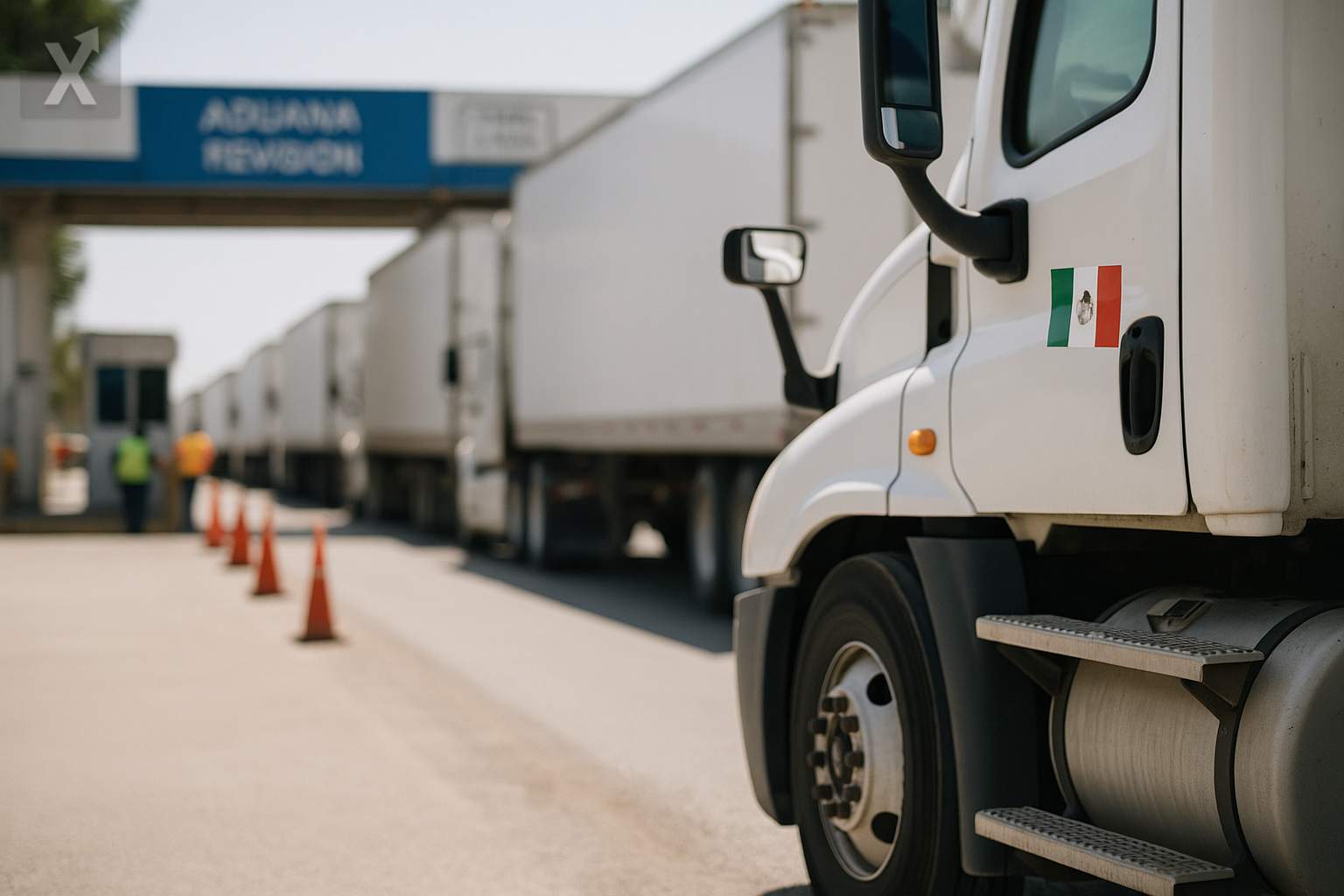Mexico Seeks Flexibility on 25% Tariff on Heavy Trucks Announced by the United States

The Mexican government has opened a dialogue with Washington to mitigate the impact of the new 25% tariff on imports of heavy vehicles announced by the U.S. administration. President Claudia Sheinbaum indicated that her team is already in talks and is confident there will be "consideration" for Mexico’s case, given the high level of productive integration between the two economies in the automotive sector.
The measure is part of a broader package of trade barriers that also includes a 100% tariff on brand-name pharmaceuticals, which is set to take effect this week. The president emphasized that, under the USMCA, most Mexican exports remain tariff-free, and that aside from finished vehicles and steel, Mexico’s exports have recently performed well. The government’s strategy is to maintain the flow of trade without disrupting cross-border supply chains.
Mexico is the leading supplier of tractor-trailers and heavy trucks to the U.S. market. The industry—with plants located in states such as Nuevo León, Coahuila, Baja California, and the State of Mexico—exports the vast majority of its production, and many components cross the border several times before final assembly. According to industry estimates, over 80% of units produced in Mexico are shipped to the United States. A 25% tariff would drive up the cost of freight, put pressure on logistics costs, and could be passed on to prices, especially in sensitive areas such as food, consumer goods, and intermediate manufacturing.
On the legal front, the USMCA guarantees free trade for goods that comply with stricter rules of origin than those in the previous agreement, but it does not entirely prevent temporary unilateral action by the United States. Mexico has access to bilateral consultations and dispute resolution mechanisms, both under the USMCA itself and at the multilateral level, if it believes the measures are unjustified. Analysts warn that the technical scope will be key: If the tariff is limited to finished units or extended to kits and parts, the impact on trade flows and plant scheduling will vary substantially.
The private sector anticipates short-term adjustments in logistics, production mix, and delivery times to cushion the impact on U.S. customers. By contrast, the 100% tariff on brand-name pharmaceuticals would have limited effects for Mexico, as the country is not a significant supplier of this segment to the U.S. market; nevertheless, it could distort global distribution chains in North America.
At the macroeconomic level, episodes of trade uncertainty often translate into greater exchange rate volatility and higher hedging costs for exporters. Even so, the trend of manufacturing relocation to Mexico—driven by geographic proximity, a skilled workforce, and the USMCA framework—continues to attract investment to industrial parks and automotive supply chains. The challenge will be to sustain that momentum while regulatory questions are resolved and competitiveness with Asia and Europe is maintained.
Looking ahead to the coming months, the focus will be on technical negotiations, potential exemptions or transition periods, and coordination with state governments in automotive clusters. While the tariff poses risks for heavy vehicle production and bilateral trade, the interdependence of value chains and both parties' interest in keeping domestic U.S. transportation costs down could create room for pragmatic solutions.
In summary, Mexico is seeking to soften a tariff that, if fully implemented, would impact a critical link in North American productive integration. The depth of the automotive relationship, the USMCA’s trade tools, and the need to keep logistics costs under control will be the key factors shaping the outcome.






